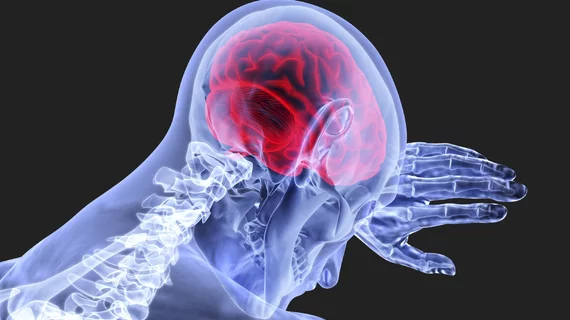There’s no question that gadolinium-based contrast agents leave behind traces of the rare-earth metal in the human brain. These remnants can hang around for months or even years, and that goes for both the linear and macrocyclic varieties. What’s not settled is whether or not “gad” depositions cause harm—and how far clinicians should go to avoid using gadolinium-based contrast agents (GBCAs), despite their proven utility with MRI, in order to err on the side of safety.
Those questions were taken up Wednesday, Nov. 28, at RSNA 2018 by Vikas Gulani, MD, PhD, of Case Western Reserve University and University Hospitals in Cleveland.
To place the increasingly high-profile concerns into context, Gulani suggested considering the differences between purported gadolinium-caused brain injury and established nephrogenic systemic fibrosis (NSF).
The latter, a progressive and often fatal condition marked by thickening of organs, joints and skin, has been definitively linked to GBCAs—but also limited to patients who already had kidney failure.
“In the phenomenon of gadolinium deposition in the brain, we have not yet identified a disease,” Gulani said. “This is a very important distinction between the two phenomena.”
Linear agents appear to show greater lingering brightness on MRI scans looking for gadolinium depositions, he said, and the controversy there centers on whether this is important or not.
Macrocyclics tend to wash out of the body to a greater degree, “but it’s a complicated washout that we’re dealing with,” Gulani said. “In both cases, I think there is a potential for harm based on an overreaction to the phenomenon.”
European vigilance
Gulani next noted a lingering source of confusion: the differences of opinion on GBCAs between the European Medicines Agency (EMA) and the FDA.
The EMA has taken the position, through its Pharmacovigilance Risk Assessment Committee (PRAC), of recommending the cautionary suspension of contrast agents based in linear gadolinium. The agency would like to see several of these products be removed from the market, with exceptions for two products that are the only ones available for their particular imaging indications.
Meanwhile, the FDA has said imagers should consider limiting the use of GBCAs to clinical circumstances in which the additional information provided by the contrast is necessary—and that goes for all GBCAs, Gulani reminded.
“The FDA urges us as healthcare professionals to re-assess the necessity of repetitive dosing in MRIs in established treatment protocols,” he said. Further, the FDA requires that printed product warnings be given to all patients receiving GBCAs.
The cross-Atlantic disagreement, Gulani said, “boils down to the EMA assuming that there is harm,” while the FDA makes no such assumption but, instead, “is urging drug companies to provide more data on the clinical implications of repeatedly dosing patients.”
Get a grip on ‘gad’
Gulani exhorted attendees to follow a very simple, two-word admonition: Be careful.
He then presented five points of which to be mindful in carrying out that directive:
- Don’t use gadolinium if you don’t need it. “This seems to be common sense,” Gulani said. “Just as with any drug, you do not want to use it like it’s just water. If you don’t need gad, don’t use gad.”
- The physician in charge should understand the medication that he or she is ordering. “Whoever is the medical director over MRI in your practice should really understand [GBCAs],” Gulani said. “And you as radiologists have a responsibility to understand these medications and what’s going on with them in the field.”
- The choice of contrast agent is complex. “There are issues that we need to take into account, such as the age of the patient, the potential side effects, the need for multiple doses, regional considerations and patient preferences, including on cost.”
- All doses must be recorded so that “we can keep a log on what’s happening to the patient.”
- All authors and co-authors of papers on gadolinium must disclose all conflicts of interest. “This is very, very important,” Gulani underscored. “And any relationship to the contrast manufacturer is relevant. I’ve seen papers where a conflict is listed with a contrast-agent manufacturer, but the relationship is [annotated as] ‘not relevant.’ I fail to understand how this is possible.”
“We all need to watch the literature and watch it very carefully, because this is a very fast-evolving field” of inquiry, Gulani concluded. “But the other side of this is: Do not panic. If the patient needs gad, give the patient gad. If you cannot make the diagnosis without gad, you may be doing potential harm to the patient by not using these drugs.”

